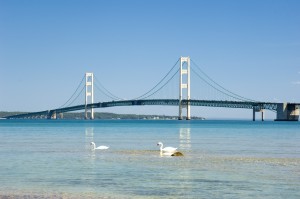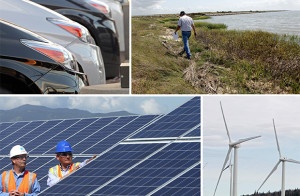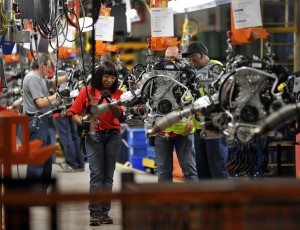We have much more to do and your continued support is needed now more than ever.
Time to Choose not to Spill or Explode
Candidates, Voters: Time to choose your energy future
It was all about the future of energy at an event at the Center for American Progress here in DC Friday morning when CAP released their new report: “Regional Energy, National Solutions: A Real Energy Vision for America”. NWF authored the Midwest and Southeast chapters of the report.

Meanwhile, back at the event, speakers including Rhode Island Governor Lincoln Chafee, described a diverse national clean energy strategy, built on the powerful energy, manufacturing and technology assets of regions across America. Speakers and the report contrast this diverse clean energy plan to the American Petroleum Institute’s “Drill Baby Drill” vision: more oil and other fossil fuels. Period. That vision is conveniently simple. The impacts, less so.
Fossil fuels play a large role in today’s economy, but we now know that the energy that powered the last two centuries comes with a side dish of volatile prices, environmental, health and safety risks, and it speeds climate change -which, by itself, threatens our economy, security, and sustaining the natural world for our children.
Fortunately, as Friday’s report describes, the energy world has changed. Today we have a wealth of large scale opportunities that take energy, our economy, and the future of wildlife and our outdoor heritage forward together.

Or, as NWF climate policy director, Joe Mendelson, said about last weeks pipeline “anomalies”: “The best approach to our energy challenges isn’t building more pipelines, its embracing clean energy solutions that don’t spill or explode”
So whats really happening out there?
As we show in the report, states and regions all across the country are proving that they can prosper by implementing new energy technologies at scale. They show that a diverse national clean energy strategy anchored on strengths of the whole nation can build hundreds of thousands of jobs, and revitalize our economy. These solutions are real and they may include some surprises:
- Offshore wind is the only utility-scale energy resource abundant enough to contribute substantially to the sustained, long-term energy demands of the Atlantic Coast region. Developing just 54 gigawatts of offshore wind in Atlantic waters would generate $200 billion in economic activity and create 43,000 permanent, well-paid technical jobs, in addition to displacing the annual output of 52 coal-fired power plants. (these regional bullets excerpted from CAP’s press release, and fact sheet)
NWF’s own recent report The Turning Point Atlantic Offshore Wind Energy underscores these results and emphasizes the diverse economic opportunities for states from Maine to Florida from robust adoption of offshore wind. NWF was happy to join Clean Energy States Alliance who authored the Atlantic coast chapter of today’s report on their release.

- In addition to revitalizing American manufacturing, the deep oil savings from vehicles now being built in the Midwest under strong new fuel economy standards mean net savings to consumers of more than $54 billion a year in 2030 and will add 570,000 jobs to the economy.
- The Southeast boasts more firms across the high-tech smart-grid value chain than any other region and continuing to lead this transition offers the opportunity to create diverse job opportunities. At the same time, if [through enhanced efficiency], the region were to cut energy use across the region by 16 percent in 2030 consumers would see an annual savings of $71 billion and 520,000 jobs by 2030.
- In the Gulf Coast region, each $1 million in investment in ecosystem restoration can create as many as 36 jobs across a huge range of occupations and skill levels—more than equivalent investments in traditional infrastructure projects.
- The Mountain West boasts nearly unlimited renewable energy resources and these nonhydro projects, either under construction or in advanced development, represent 71,872 jobs. A study by Headwaters Economics found that from 1970–2010, nonmetropolitan counties in the West that had more than 30 percent protected federal lands increased jobs by 345 percent. Nonmetropolitan counties with no protected federal lands saw just 83 percent growth.
- The solar industry in California has experienced significant growth over the past 15 years. Since 1995 the number of solar businesses grew by 171 percent, and total employment jumped by 166 percent. As a point of comparison, the total number of California businesses has grown by 70 percent and employment increased by 12 percent.
These examples are not the only promising clean energy opportunities for the given regions, nor have we covered all the regions or promising technologies for the nation. But they clearly show a wealth of win-win energy opportunities in front of us that deliver to communities, industries, and the environment across the country. America’s energy strategy should start there.





















